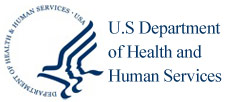Pennsylvania Governor Tom Wolf announced a $225 million statewide grant program to support small businesses that were impacted by the COVID-19 public health crisis and subsequent business closure order.
The funding was developed in partnership with state lawmakers and allocated through the recently enacted state budget, which included $2.6 billion in federal stimulus funds through the Coronavirus Aid, Relief, and Economic Security (CARES) Act, of which $225 million was earmarked for relief for small businesses.
The Department of Community and Economic Development (DCED) will distribute the funds to the Community Development Financial Institutions (CDFIs), which will then administer the funding in the form of grants.
Eligible businesses will be able to use the grants to cover operating expenses during the shutdown and transition to re-opening, and for technical assistance including training and guidance for business owners as they stabilize and relaunch their businesses.
The funds will be available through three programs:
- $100 million for the Main Street Business Revitalization Program for small businesses that experienced loss as a result of the governor’s March 19, 2020 order relating to the closure of all non-life-sustaining businesses and have or will incur costs to adapt to new business operations related to COVID-19;
- $100 million for the Historically Disadvantaged Business Revitalization Program for small businesses that experienced loss as a result of the business closure order, have or will incur costs to adapt to new business operations related to COVID-19, and in which socially and economically disadvantaged individuals own at least a 51 percent interest and also control management and daily business operations.
- $25 million for the Loan Payment Deferment and Loss Reserve Program, which will allow the CDFIs the opportunity to offer forbearance and payment relief for existing portfolio businesses that are struggling due to the impact of COVID, as well as shore up the financial position of the CDFIs that are experiencing significant increased defaults in their existing loan portfolios.


